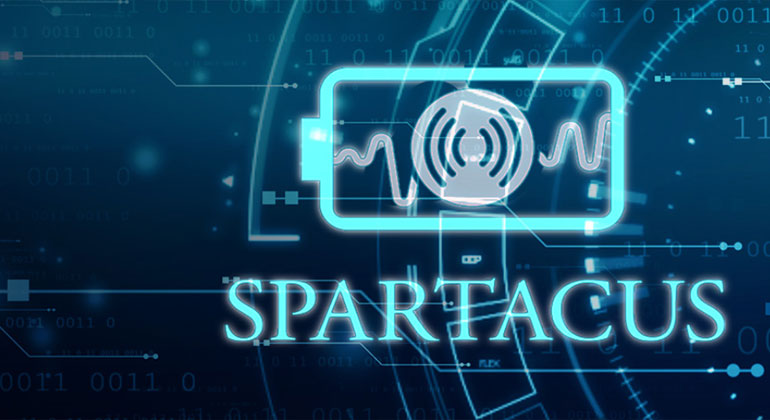Smart sensors for future fast charging
“SPARTACUS” battery research project has mastered the first milestones
The SPARTACUS research project as part of the EU research initiative BATTERY 2030+ has now been running for around a year. The project has successfully mastered the first milestones and project goals. On the way to sensor-based optimization of charging times, range and service life for lithium-ion batteries, the SPARTACUS project team has worked on a number of partial aspects over the past 12 months. Now the individual components can be combined into a complete system.
SPARTACUS – the abbreviation stands for “Spatially resolved acoustic, mechanical and ultrasonic sensing for smart batteries”. The research project aims to develop a multifunctional sensor array technology for batteries that transmits the relevant data to the battery management systems for optimal charging and discharging depending on the battery condition. The project focuses on mechanical and acoustic sensors, supplemented by electrochemical impedance measurements and temperature sensors. The SPARTACUS sensor technology is intended to detect faults and negative influences on battery life and performance at an early stage.
The SPARTACUS project team started its work one year ago. The goal is to ensure that previously unused reserves in battery management are exploited in the future by means of comprehensive battery monitoring. This should make it possible to reduce charging times by up to 20 % without compromising reliability and service life. “The SPARTACUS project has broken new ground in many respects,” explains coordinator Gerhard Domann of Fraunhofer Institute for Silicate Research ISC. For example, he says, not only have new sensor concepts been prepared by combining acoustic-mechanical and thermal sensors with advanced analysis methods, but the modeling of the processes in the battery cell has also been advanced in such a way that new prediction models for battery condition and optimal charge control are possible. “After the first year of the project, all working groups have successfully advanced their individual project work, and all specifications have been defined. Now it is a matter of putting the puzzle pieces together and linking them into a successful monitoring technology for batteries,” Domann continues.
This marks the beginning of the second project phase, in which the new battery sensor technology will deliver real data in precisely defined test series, which will be correlated with the model data. On this basis, the refined prediction models will be developed, with which future battery management systems can better exploit the performance range of the batteries. At the Green Batteries Conference 2021, which took place in October, the first project results were already presented to a larger audience from science and industry and received with great interest.








